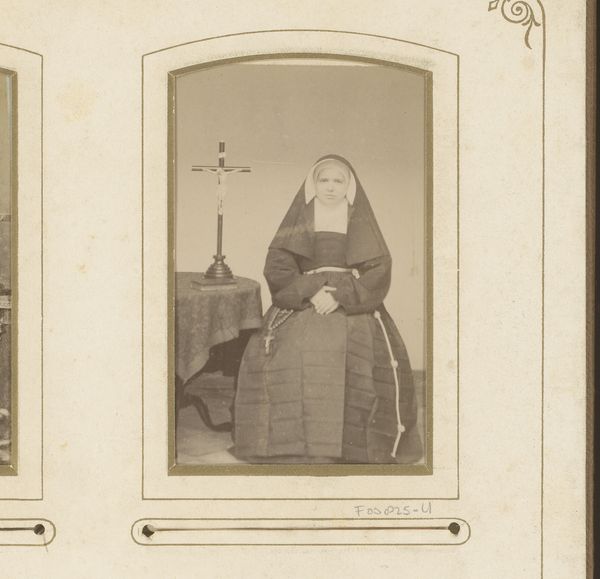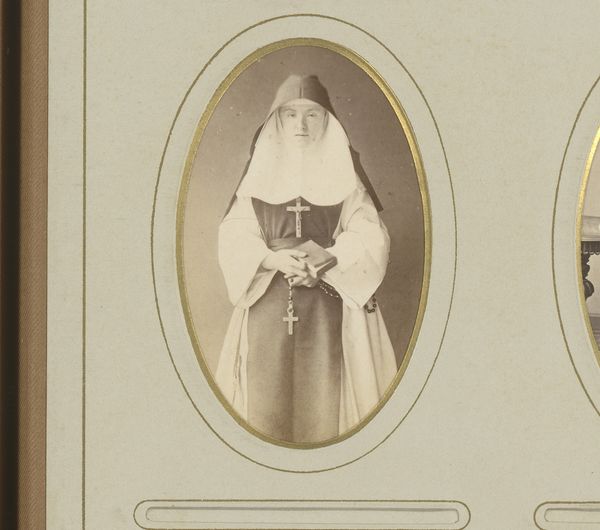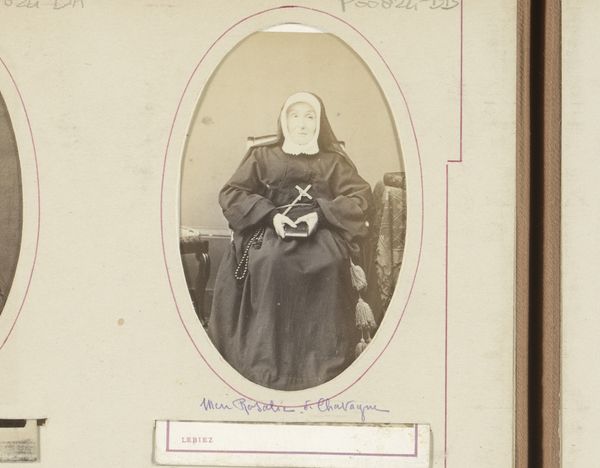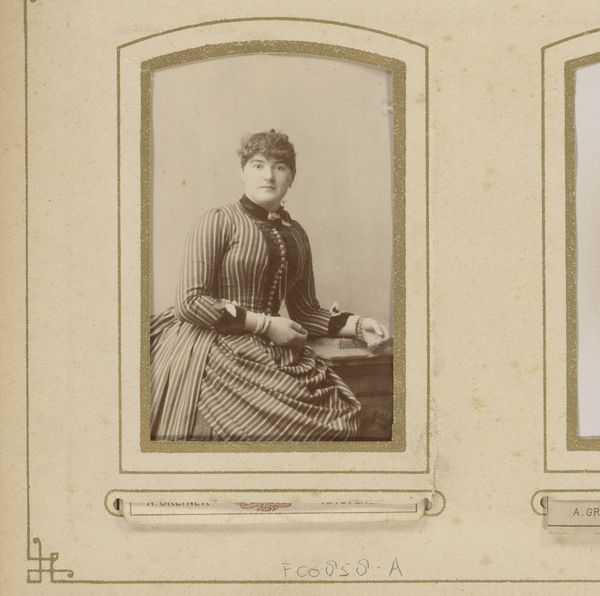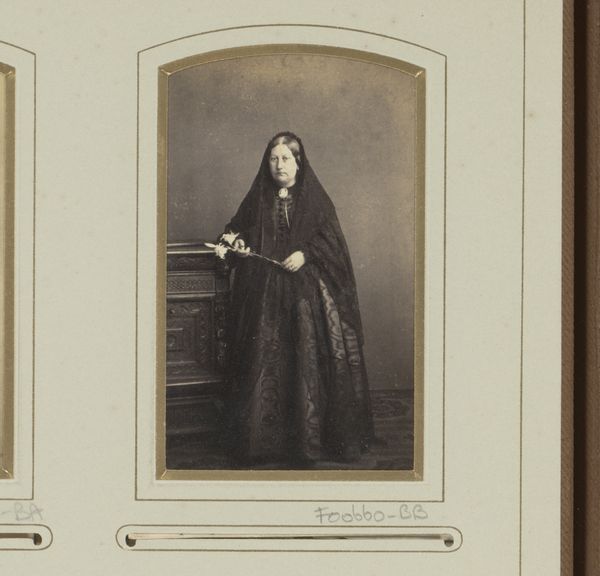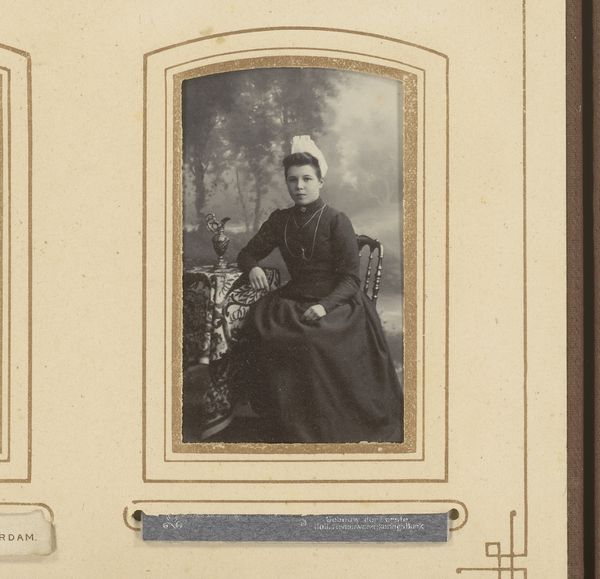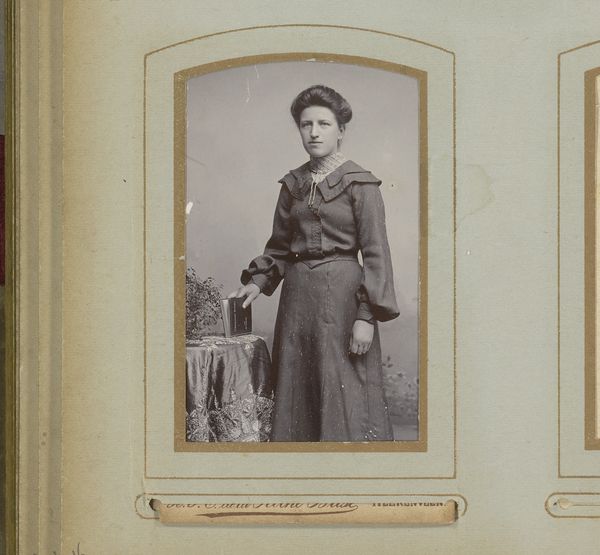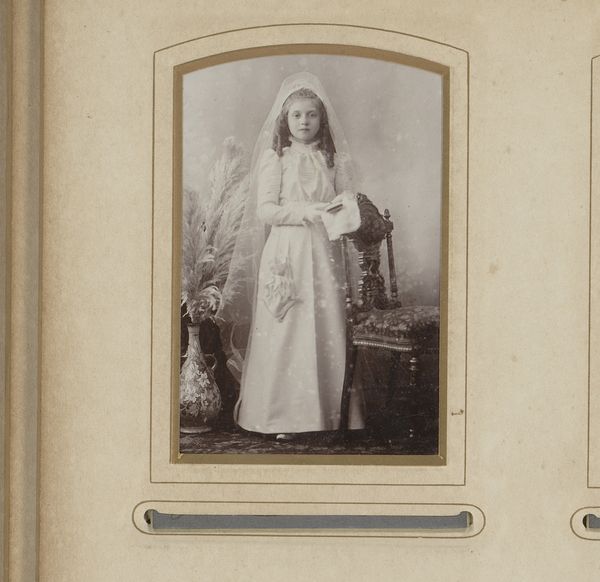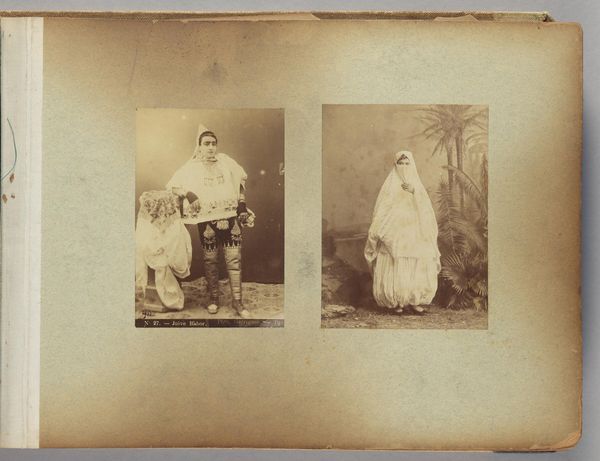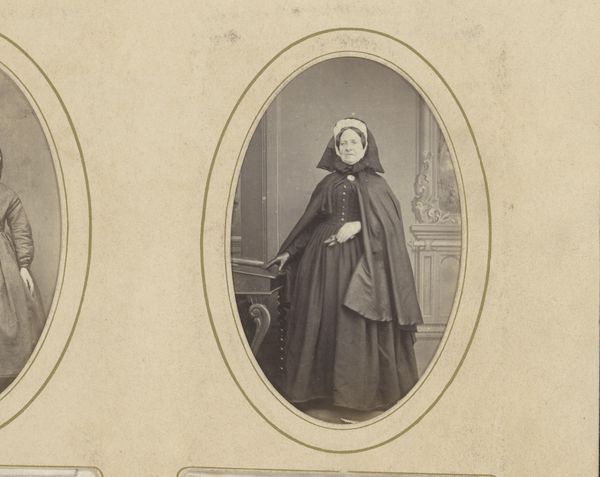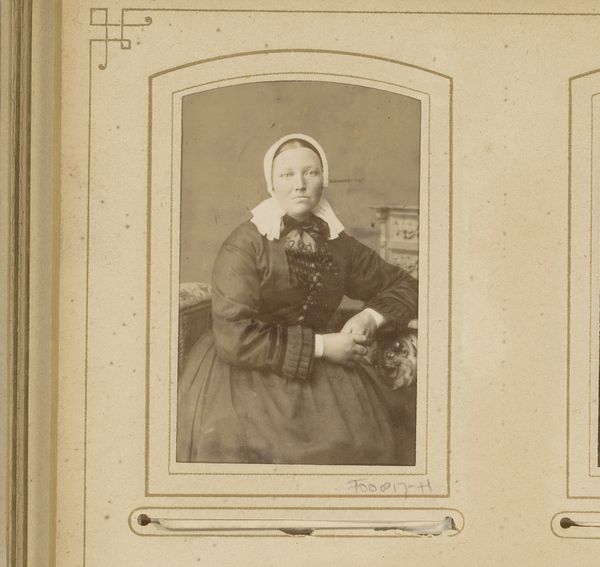
Portret van een zittende non met bijbel en rozenkrans in de hand 1878 - 1892
0:00
0:00
photography, gelatin-silver-print
#
portrait
#
medieval
#
photography
#
historical photography
#
gelatin-silver-print
#
19th century
#
genre-painting
#
realism
Dimensions: height 86 mm, width 53 mm
Copyright: Rijks Museum: Open Domain
Curator: I find this gelatin silver print, attributed to Marius N.F. Rotteveel, fascinating. It's entitled "Portret van een zittende non met bijbel en rozenkrans in de hand"—"Portrait of a Seated Nun with Bible and Rosary in Hand"—and was likely created between 1878 and 1892. The photo quality for the period is rather sharp. Editor: Yes, sharp and startling, isn't it? I find the solemnity radiating from the nun immediately strikes me. The way she holds her bible and rosary suggests a quiet strength or even a stoic endurance, wouldn't you agree? Curator: Definitely, and her clothing… a symbol in itself of service, sacrifice and… well, of belonging. How might such attire and associated objects shape one's sense of self or place in the world, do you think? Editor: Everything about it is symbolic of course. We have the bible for enlightenment, beads for incantation and penance and the crucifix visible in the background: a representation of ultimate devotion. The fact that these all occur in a photographic portrait, which gained popularity during this era, speaks volumes about cultural identity. These props seem staged and the subject's stern face lends to the drama. She seems unsmiling yet present, and perhaps proud. The items are talismans and clues, almost relics to tell a sacred tale. Curator: It’s a fascinating collision, really: medieval iconography captured with cutting-edge photographic technology! To think, this photographic process helped to spread so many images for family use or general advertisement—a different use of visual information, but here: images for reflection and religious duty. It would seem the intent of this photograph differs, setting this portrait apart. Do you think this photograph’s composition makes the work a historical document, art, or something else entirely? Editor: That's the heart of it. While seemingly simple in its subject matter, its combination of symbol and technique pushes it into a space beyond mere record. It's a tangible echo, reverberating the intersection of faith, representation, and cultural memory for years to come. Curator: Yes, a captured fragment of belief made indelible and now open for our own interpretation. A photograph to keep in mind long after this tour has ended, and thanks for joining us!
Comments
No comments
Be the first to comment and join the conversation on the ultimate creative platform.
